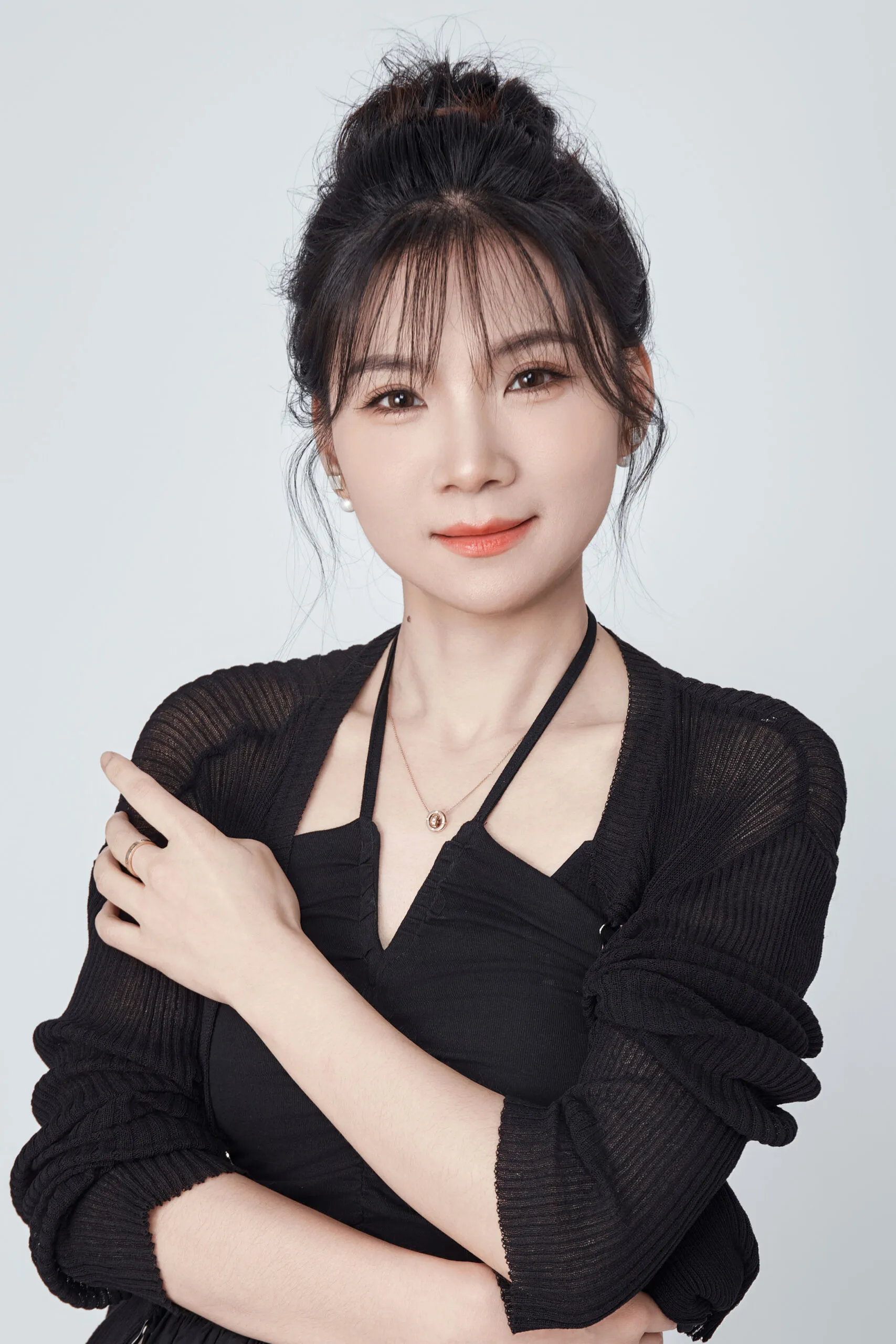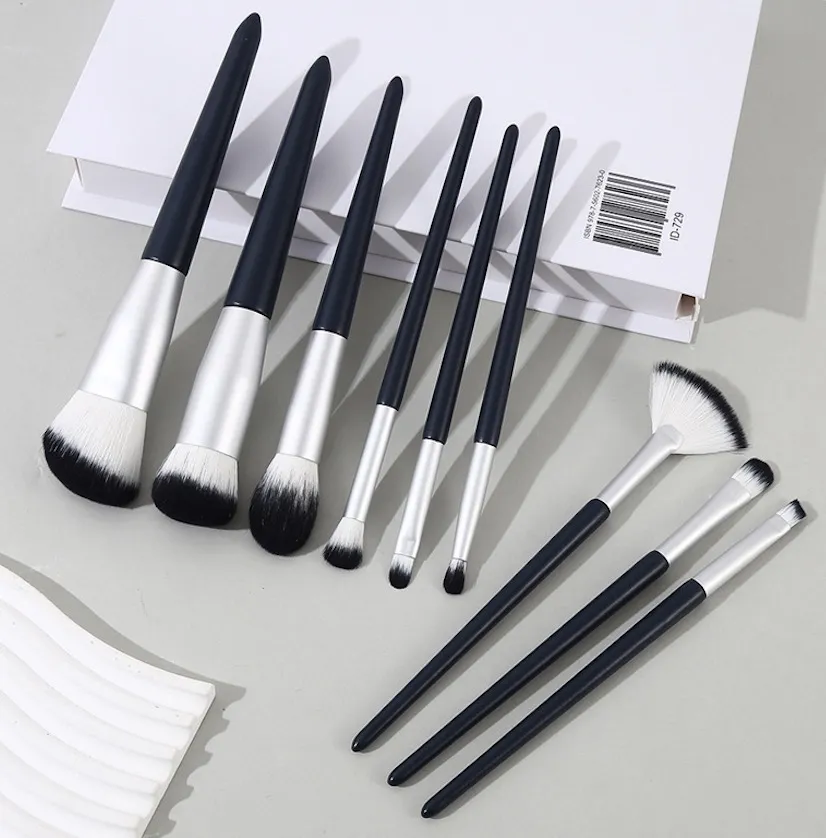Confused about what makes a good synthetic brush? This uncertainty can lead to choosing the wrong tools for your products, resulting in poor performance and unhappy customers for your brand.
Synthetic makeup brushes1 are primarily made from man-made polymer filaments like Nylon, Taklon, and PBT (Polybutylene Terephthalate). These materials are chosen for their durability, low porosity (great for liquids), and ability to be shaped and tipped for specific performance with cream, liquid, or powder cosmetics.
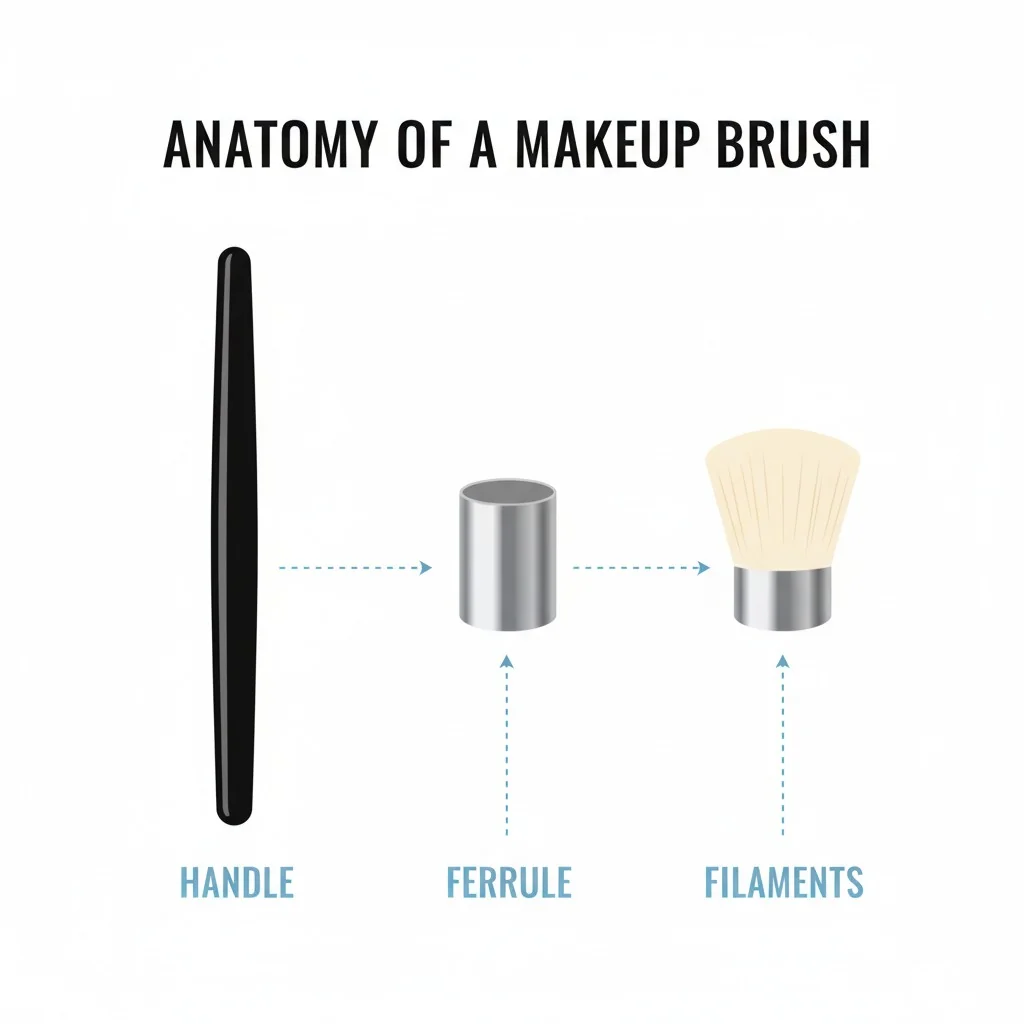
But knowing the names of the polymers is just the first step. The real magic—and the success of your product line—lies in understanding why a specific fiber is chosen and how the entire brush is constructed. As someone who started on the factory floor, I’ve seen firsthand how a small detail can make or break a brush’s performance. Let’s go deeper than just a materials list and explore what you, as a brand founder, truly need to know to source with confidence.
All synthetic brush fibers are a type of plastic.True
Synthetic filaments like Nylon, PBT, and Taklon are all polymers, which are a broad class of materials that includes plastics. They are engineered for specific properties like softness and durability.
Synthetic brushes are always better than natural hair brushes.False
While synthetic brushes excel with liquid and cream products and offer ethical benefits, high-quality natural hair brushes are still preferred by some artists for their unique powder pickup and blending capabilities. The 'better' choice depends on the specific application and brand values.
Polymer to Performance: How Do Nylon, Taklon, and PBT Change Your Brush Results?
Choosing the right brush fiber can feel like a guess. But the wrong choice leads to streaky foundation, patchy powder application, and a product that fails your customers. Let’s connect the polymer science to the real-world performance you need.
Nylon2 is a durable, resilient fiber, while Taklon and PBT (both polyesters) have lower moisture absorption, making them superior for applying liquid and cream products without waste. The fiber’s diameter and tip-finishing process determine its softness and how well it picks up and lays down product.
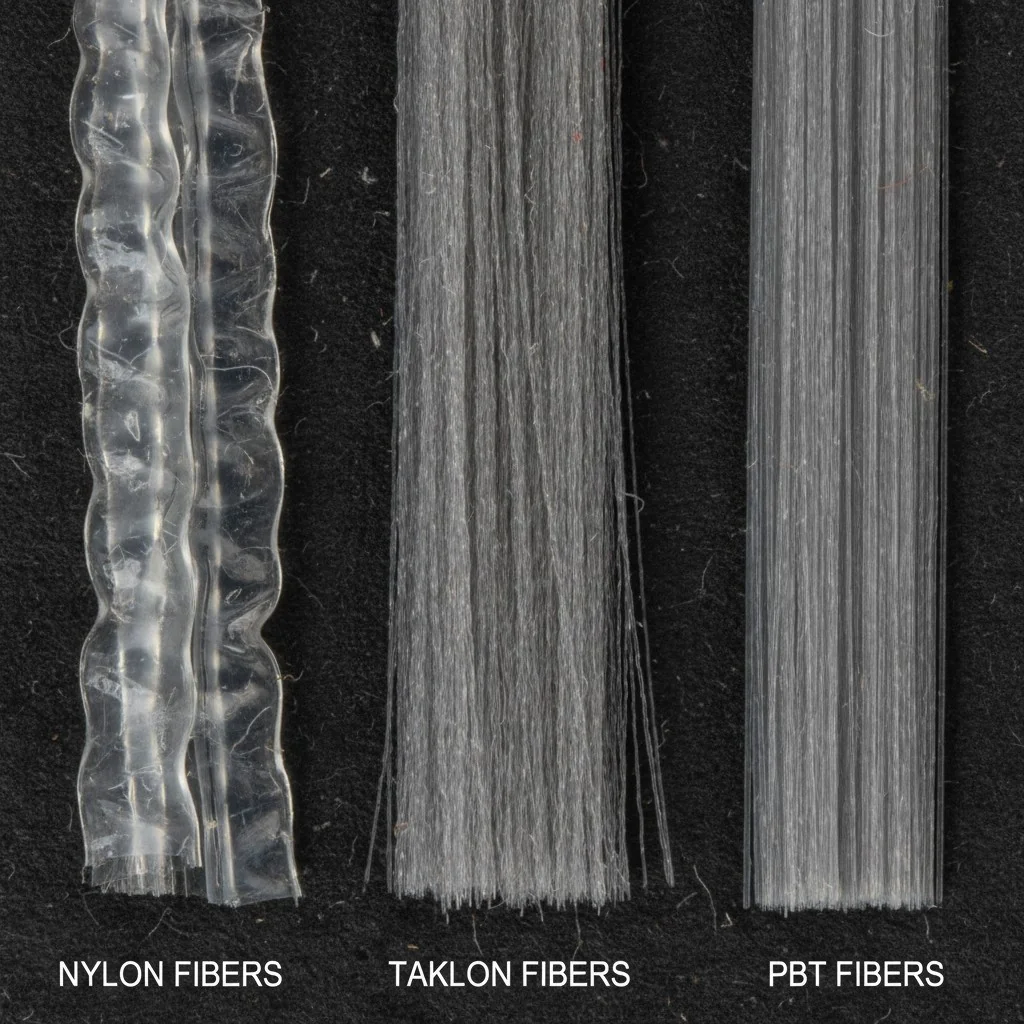
When I work with brand founders, the first question we tackle is always about the formula. Are you launching a liquid foundation, a cream blush, or a pressed powder? The answer dictates our starting point for fiber selection. It’s not just about softness; it’s about how the fiber interacts with your cosmetic. A fiber that absorbs too much of your liquid foundation is literally absorbing your profits. That’s why understanding the core differences is so critical for brand owners.
From Polymer to Perfect Application
The performance of a brush head comes down to a few key variables. The material itself is just one piece of the puzzle. The diameter of each fiber (measured in microns) and how the tips are finished (e.g., tapered, flagged, or polished) have a huge impact on the final feel and function.
| Fiber Type | Key Property | Best For | Why It Works |
|---|---|---|---|
| Nylon | High resilience, good bend recovery | Powders, some creams | Tends to be slightly more porous than PBT3, but its strength makes it durable for everyday use. Can be engineered for softness. |
| Taklon4/PBT | Very low moisture absorption, smooth surface | Liquids, Creams | The smooth, non-porous filaments don’t soak up product, ensuring a seamless application and less waste. This is my go-to for foundation and concealer brushes. |
| Specialty Blends | Combination of textures and diameters | Multi-purpose use | By mixing different types of fibers, we can create brushes that have both the stiffness to apply product and the softness to blend it out. |
Taklon is a specific brand name for a type of polyester fiber.True
Taklon was originally a trademarked name for a high-quality, tapered polyester filament. The term is now often used more generally to refer to soft, synthetic PBT or polyester fibers used in cosmetic and art brushes.
The color of a synthetic fiber affects its performance.False
The color of synthetic filaments is due to dyes added during manufacturing and does not inherently change the fiber's performance, softness, or porosity. It is a purely aesthetic choice to match brand identity.
Inside the Build: How Do Ferrules, Adhesives, and Tip-Polishing Prevent Shedding?
There’s nothing worse than launching a beautiful brush set, only to get customer complaints about shedding. This instantly damages your brand’s reputation for quality. Let’s look at the hidden construction details that create a durable, shed-proof brush.
A high-quality brush uses strong two-part epoxy adhesive, a double-crimped brass Ferrule5, and properly bundled filaments. These components work together to mechanically and chemically lock the bristles in place, preventing shedding through countless uses and washes.
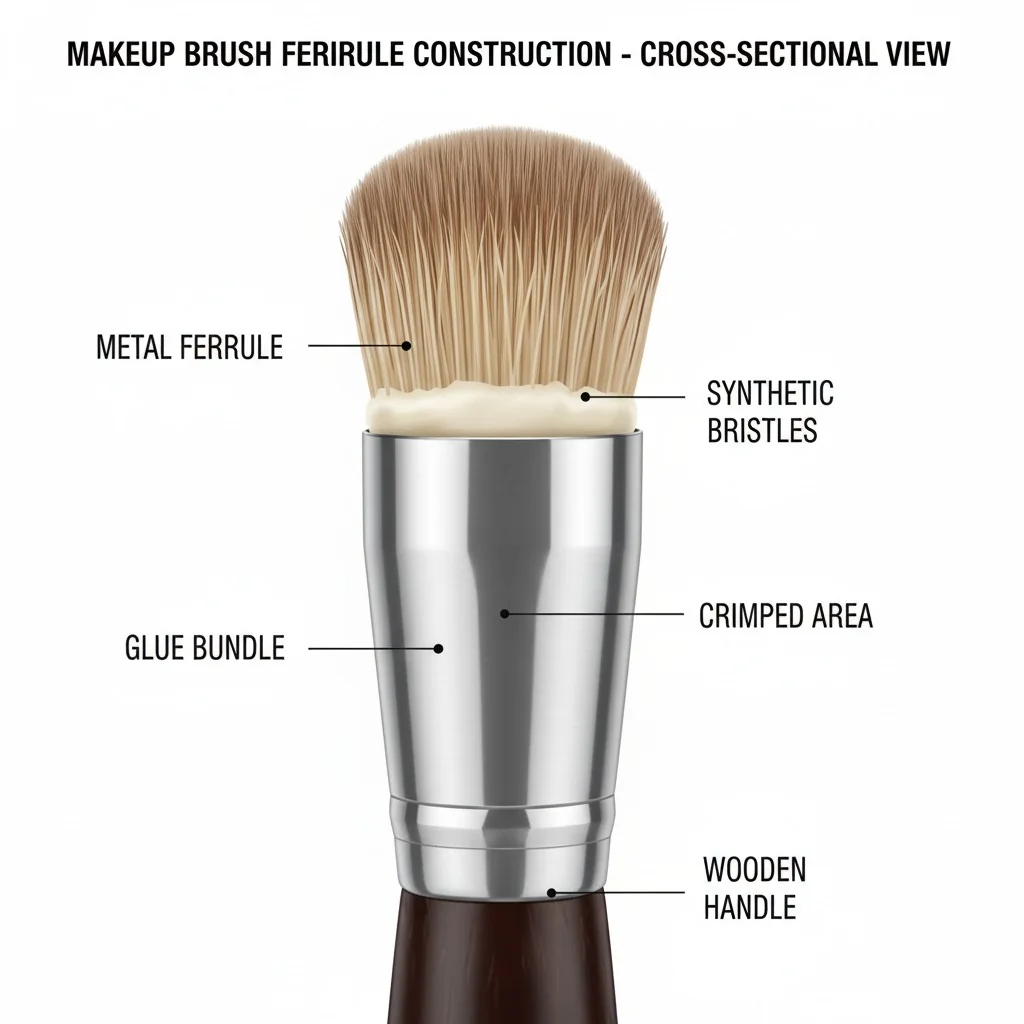
I’ve walked through hundreds of factories, and the glueing station is where many brands unknowingly cut corners to save a few cents. A cheap Adhesive6 or a rushed curing process is the number one cause of shedding. Another common mistake is opting for an aluminum ferrule instead of brass. While it looks similar, aluminum is softer and more prone to corrosion, which can loosen the crimp over time and cause bristles to fall out. These are the small details that separate a premium brush from a disposable one.
The Anatomy of a Shed-Proof Brush
Building a brush that lasts requires attention to detail at every stage of assembly. It’s a combination of the right materials and the right techniques.
- The Ferrule: This is the metal band that connects the bristles to the handle.
- Brass: The industry standard for quality. It’s strong, corrosion-resistant, and holds its shape for a tight, secure crimp.
- Aluminum: A cheaper alternative. It’s softer, can dent easily, and may corrode, leading to a loose ferrule and shedding.
- The Adhesive: The glue that holds the bristle bundle inside the ferrule.
- Epoxy Resin: A strong, two-part adhesive is essential. It creates a solid, waterproof plug at the base of the bristles that won’t break down with washing.
- The Crimp: Most quality brushes are "double-crimped." This means the ferrule is squeezed tightly onto the handle in two places, creating a strong mechanical bond that prevents the head from wobbling or detaching.
Aluminum ferrules are just as good as brass ferrules.False
Brass is significantly stronger and more corrosion-resistant than aluminum. A brass ferrule provides a more secure, long-lasting crimp, reducing the risk of shedding and handle loosening over time.
All brush glues are waterproof.False
Only high-quality, industrial-grade adhesives like two-part epoxy are fully waterproof and resistant to the solvents found in makeup and brush cleaners. Cheaper glues can degrade over time, leading to bristle loss.
Brand Buyer’s Toolkit: What Spec Sheets, Compliance Checks, and QC Tests Should You Demand?
Sourcing brushes can feel like a black box, leaving you worried about inconsistent quality and hidden compliance risks. You need a clear, actionable checklist to give your supplier. This ensures you get exactly what you paid for, every time.
Demand a detailed tech pack specifying fiber type, density, ferrule material (brass), adhesive, and handle finish. Always request compliance declarations for regulations like EU REACH and California Prop 65, and ask for QC test results on shedding, pull strength, and logo durability.

When a new client like Emily comes to me, she’s often frustrated by past experiences where the bulk order didn’t match the "golden sample." This happens when specifications are not clearly defined and documented from the start. A professional supplier should be able to provide a detailed technical pack, or "tech pack," for your approval before production begins. This document is your contract and your quality guarantee. Don’t be afraid to ask for it—it shows you’re a serious buyer who values quality.
Your Procurement Checklist for Flawless Brushes
Use this list as a guide when discussing your project with a manufacturer. Getting these details in writing protects your brand and your investment.
- Technical specifications7 to Define:
- Filament: Material (e.g., PBT), Diameter (microns), Tip Finish (e.g., tapered), Density.
- Ferrule: Material (insist on brass), Color/Finish (e.g., matte black), Crimp Style (double crimp).
- Handle: Material (e.g., FSC-certified wood), Shape, Finish (e.g., 7-layer PU paint).
- Logo: Application Method (e.g., laser engraving), Pantone Color, Placement.
- Compliance Documents to Request:
- REACH Declaration: Confirms no restricted substances are used (critical for the EU market).
- Prop 65 Statement: Addresses chemical safety for the California market.
- Vegan/Cruelty-Free Certification: Ensures no animal-derived materials or testing.
- QC Tests to Ask About:
- Pull Test: Measures the force required to pull a bristle out.
- Shedding Test: A standardized test (e.g., 100 strokes on a rough surface) to check for loose fibers.
- Logo Durability Test: An abrasion or "rub" test to ensure your branding won’t wear off.
Makeup brushes are regulated as 'cosmetics' by the FDA.False
The FDA and EU regulate brushes as 'articles' or tools, not cosmetics. While the brush itself doesn't require ingredient lists, any marketing claims made about it must be truthful and non-misleading.
Requesting compliance documents slows down production.True
While it may add a small amount of time to the initial sourcing phase, requesting compliance documents upfront saves significant time and money by preventing customs holds, product recalls, or legal issues down the line.
Sustainable and Scalable: Why Is the Market Shifting to Synthetic?
Are you wondering if choosing synthetic fibers is the right long-term business move for your brand? You don’t want to invest in a product line only to find you’ve missed a major market trend. The data is clear: synthetic is the future for modern, ethical, and scalable beauty brands.
The market is rapidly shifting to synthetics due to strong consumer demand for vegan and cruelty-free products. Synthetics also offer superior performance with modern formulas, greater manufacturing consistency, and new Sustainable options8 like recycled fibers and eco-friendly handles.
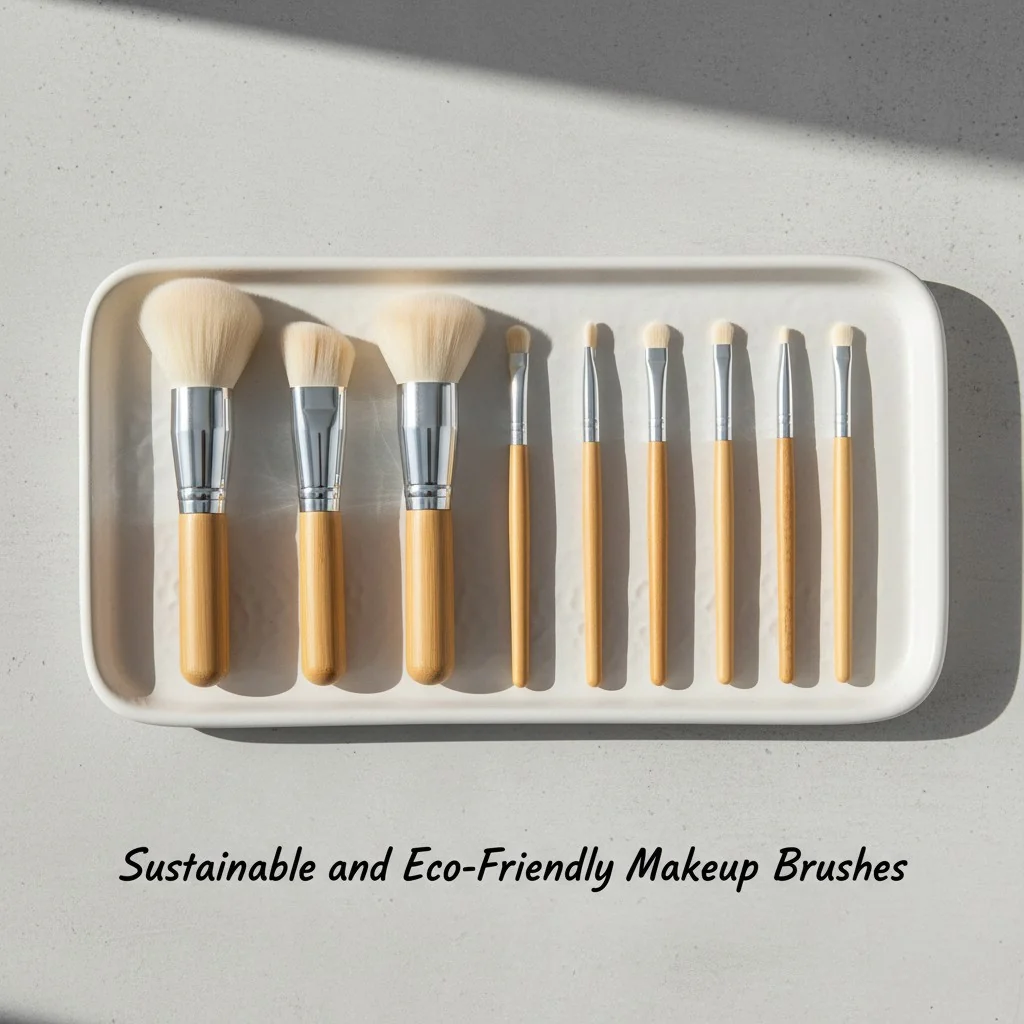
The conversation around synthetic brushes has changed. It’s no longer just about being "cruelty-free." It’s about performance, innovation, and smart business strategy. Natural animal hair is inconsistent in quality and price, and its supply chain can be unpredictable. For a brand that needs to scale, synthetic fibers offer a reliable, high-performance solution that can be produced consistently in any quantity. We’re now seeing incredible innovation, with fibers made from recycled materials and handles made from fast-growing bamboo or wheat straw, allowing brands to build a powerful sustainability story.
The Business Case for Synthetic Brushes
The move to synthetic isn’t just an ethical choice; it’s a strategic one. It aligns your brand with modern consumer values and provides a more stable manufacturing foundation for growth.
- Market demand9: The demand for vegan and cruelty-free cosmetics is not a fad; it’s a fundamental market shift. Aligning your tools with this movement is essential for brand relevance.
- Performance & Consistency: Synthetic fibers are engineered for perfection. Every batch is identical, ensuring that the 10,000th brush you produce performs exactly like the first. This level of consistency is impossible to achieve with natural hair.
- Sustainability Innovation: The "eco" story goes beyond just the bristles.
- Recycled Filaments: We can now source high-performance rPBT fibers made from post-consumer recycled plastics.
- Eco-Friendly Handles: Options like FSC-certified wood (guaranteeing responsible forest management), fast-growing bamboo, and handles made with wheat-straw composites reduce reliance on virgin materials.
This combination of ethics, performance, and scalability is why synthetic brushes continue to dominate the market and are the smartest choice for growing brands.
FSC-certified wood is the only sustainable handle option.False
While FSC-certified wood is an excellent choice for ensuring responsible forestry, other sustainable options include fast-growing bamboo, recycled aluminum, and plastics blended with agricultural waste like wheat straw.
All synthetic brushes are vegan.True
By definition, synthetic fibers are man-made from polymers and contain no animal-derived components. Therefore, any brush made with 100% synthetic bristles is inherently vegan.
Conclusion
Understanding these material and manufacturing details empowers you to source brushes that perform beautifully, align with your brand values, and help you build a business that lasts.
References
-
Explore the advantages of synthetic brushes for performance and ethical considerations. ↩
-
Learn how Nylon enhances brush durability and performance for various cosmetics. ↩
-
Understand the advantages of PBT fibers for liquid and cream product applications. ↩
-
Discover the unique benefits of Taklon fibers in achieving flawless makeup application. ↩
-
Find out how the ferrule affects brush quality and performance. ↩
-
Learn about the importance of high-quality adhesives in preventing brush shedding. ↩
-
Get insights on essential specs to ensure quality and performance in brush sourcing. ↩
-
Explore eco-friendly materials and practices in the makeup brush industry. ↩
-
Discover the growing consumer preference for synthetic brushes in the beauty industry. ↩

